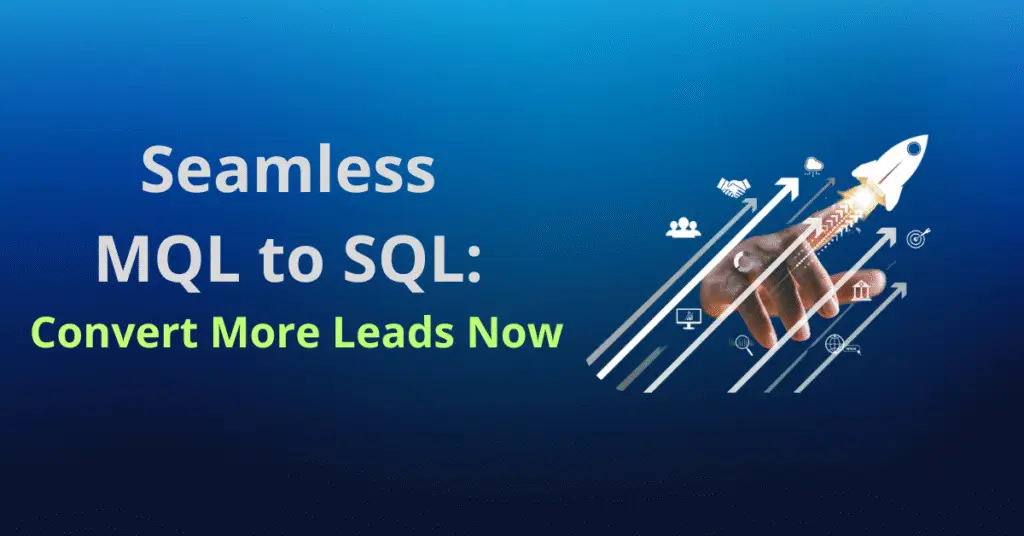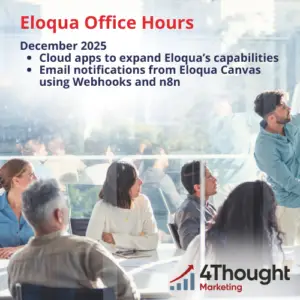
Ever feel like your best marketing leads vanish into thin air after reaching a certain point? You’re not alone. The transition from a Marketing Qualified Lead (MQL)—someone showing genuine interest—to a Sales Qualified Lead (SQL)—a prospect ready for serious sales engagement—is critical. Get it right, and your conversion rates soar. Get it wrong, and you’re leaving money on the table. This guide provides the essential framework to master the MQL to SQL handoff, ensuring your valuable MQLs are nurtured effectively and become your next successful SQLs. Let’s bridge that gap and fuel your sales pipeline. Understanding the conversion process for marketing leads to sales lead is essential for maximizing your marketing strategy.
The Power of a Streamlined MQL to SQL Process
To enhance your strategy, it’s crucial to recognize the significance of transitioning efficiently. By improving your transition methods, you increase the likelihood of turning interested leads into loyal customers.
Think of your marketing efforts as casting a wide net, attracting individuals who show interest in your offerings. The MQL is someone who raises their hand or meets the established lead scoring criteria, indicating they want to learn more. The SQL is the prospect Sales confirms is a good fit and ready for direct sales interaction. A well-defined process for moving leads from MQL to SQL is vital because it:
- Maximizes Conversion Rates: Ensures that promising MQLs don’t get lost or mishandled before reaching the sales team.
- Improves Sales Productivity: Equips your sales team with leads with a higher propensity to close, allowing them to focus their efforts effectively.
- Enhances Marketing ROI: Justifies your marketing spend by ensuring that generated leads are effectively converted into revenue.
- Fosters Collaboration: Breaks down silos between marketing and sales, creating a unified approach to revenue generation.
- Shortens the Sales Cycle: Moves qualified prospects through the pipeline more efficiently.
Key Guidelines for Optimizing Your Transition
To effectively manage the journey from Marketing Qualified Lead (MQL) to Sales Qualified Lead (SQL), consider these crucial guidelines:
Implement Real-Time Sales Alerts for MQLs
When an MQL signals strong buying intent (e.g., requests a demo, downloads a pricing guide, engages with key product pages), immediate notification is key. Set up your CRM and marketing automation platform to trigger instant alerts to the appropriate salesperson. This ensures swift follow-up while the lead’s interest is high. Defining clear MQL criteria is the first step in making these alerts effective. By clearly defining what constitutes a Marketing Qualified Lead (MQL) and setting up timely alerts, you ensure no potential Sales Qualified Lead (SQL) is missed.
Automate CRM Task Creation for SQL Follow-up
Simply alerting sales isn’t enough. If accepted, automatically generate specific tasks within your CRM for each new SQL. These tasks should include relevant MQL engagement data, the triggering event, and suggested next steps for the salesperson. Standardized tasks ensure consistency and accountability in the follow-up process for every potential Sales Qualified Lead (SQL). Efficiently managing the transition from a Marketing Qualified Lead (MQL) involves creating actionable tasks that lead to effective engagement and measurement by the sales organization for Sales Qualified Leads (SQL). By focusing on the MQL to SQL conversion, businesses can streamline their sales processes and improve overall revenue generation.
Establish and Enforce Follow-Up Time SLAs for SQLs
Speed is critical in accepting an MQL as a Sales Qualified Lead (SQL). Define strict Service Level Agreements (SLAs) that dictate the maximum time a salesperson has to contact a newly transitioned MQL. These timelines should be based on your industry benchmarks, the accepted review cycle negotiated between the marketing and sales teams, and the urgency implied by the lead’s actions as an MQL. Consistent adherence to these SLAs significantly impacts conversion rates.
A key aspect of optimizing the MQL to SQL process is ensuring timely follow-up, which is crucial for turning a Marketing Qualified Lead (MQL) into a successful Sales Qualified Lead (SQL).
Develop a Clear and Shared Definition of MQL and SQL (Service Level Agreement – SLA)
The foundation of a smooth MQL to SQL process is a mutual understanding between marketing and sales on what constitutes each lead stage. Your SLA should detail the specific criteria a lead must meet to be classified as an MQL and the additional review and action required for it to become an SQL. This shared definition ensures that marketing is sending over truly sales-ready leads. It should also specify the time before an unactioned MQL is reassigned to a new salesperson. This ensures sales understands the context, Marketing’s expectation on action, and engagement history of each SQL.
A well-defined Service Level Agreement (SLA) ensures clarity on what constitutes a Marketing Qualified Lead (MQL) and a Sales Qualified Lead (SQL), and the responsibilities for the sales team, leading to a more efficient lead management process.
The importance of transitioning from MQL to SQL cannot be overstated. Effective strategies lead to better engagement and customer retention.
Implement Regular Reviews and Optimization of the MQL to SQL Process
The lead management landscape is dynamic. Regularly analyze your MQL to SQL conversion rates, time between MQL to SQL, re-assignment by salesperson, sales cycle length, and feedback from marketing and sales teams. Identify bottlenecks and areas for improvement in your process. These reviews should be collaborative, with both teams contributing to optimize the flow of leads from MQL to SQL.
Continuous improvement of your MQL to SQL process, based on performance data, is essential for maximizing the conversion of Marketing Qualified Leads (MQLs) into valuable Sales Qualified Leads (SQLs).
Conclusion
Effectively navigating the journey from Marketing Qualified Lead (MQL) to Sales Qualified Lead (SQL) is no longer a luxury—it’s necessary to drive revenue growth. By implementing these guidelines and fostering a collaborative environment between your marketing and sales teams, you can ensure that more of your promising MQLs are accepted as valuable SQLs and converted to loyal customers. Ready to optimize your lead handoff and see a real impact on your bottom line? 4Thought Marketing can help you implement these strategies and fine-tune your MQL to SQL process for maximum efficiency.
Maximizing the efficiency of your MQL to SQL process can significantly impact your overall marketing success.





